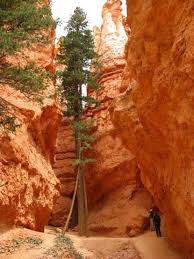
Navajo Loop
Image: nps.gov
Following more than 16 years with Consolidated Edison Company of New York, including 10 years as Division Manager, Paul Angelides established the Syosset, New York, engineering firm Paul J. Angelides, PE, PC. He has led the firm as president for over three decades. Beyond his professional activities, he enjoys staying active by traveling and hiking at various national parks.
When it comes to hiking at America’s national parks, there are few bad choice for trail enthusiasts to make. However, certain parks certainly cater more to the hiking lifestyle than others. The Bright Angel Trail at Grand Canyon National Park, for example, is one of North America’s most well traveled routes. The trail offers a stunning view of the canyon as hikers follow the 12 mile round trip through stifling heat and varying degrees of difficulty.
The Navajo Loop at Bryce Canyon National Park is not as long or challenging as Bright Angel Trail, but that may be exactly what some hikers are looking for. A three mile loop, the Navajo trail provides panoramic shots of some of the nation’s most unique, visually arresting terrain.
Other trails are more technically or physically challenging. For instance, the Sargent Mountain Loop at Acadia National Park is just 2.75 miles in one direction, but requires hikers to negotiate elevations in excess of 1,370 feet. The John Muir Trail, meanwhile, is one of the most comprehensive hiking trails in the world. Spanning numerous California parks, including Yosemite and Sequoia, the John Muir Trail extends for 211 miles and can be subdivided into a number of shorter day hikes. For those interested in a greater challenge, the trail represents one leg of the much larger Pacific Crest Trail.


You must be logged in to post a comment.